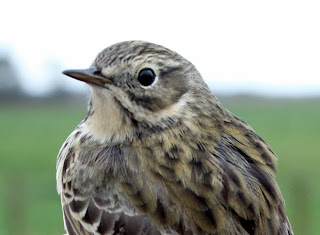A couple more ringing sessions left the scores ticking up. I missed yesterday’s mass coastal movement of redpolls because I needed a lie in after a run of early mornings, but I promised myself today would be different.
Will stayed at home on Saturday too, but unlike me he managed to ring birds in his garden in between the daily chores i.e. more finches and sparrows: 4 Chaffinch, 4 Goldfinch, 4 House Sparrow, 2 Tree Sparrow and 1 Great Tit plus recaptures of 6 Chaffinch and 4 House Sparrow. Looks like the Chaffinch and House Sparrow forgot there are nets up there sometimes.


Back on song this morning, Will and I met at Out Rawcliffe at 0600, and how these mornings get earlier and earlier now! Unlike yesterday’s coastal deluge of migrants, mainly redpolls, our inland experience this morning was more of a steady, slow dribble of birds coming from the south to eventually find the nets. We caught another 29 birds, 22 new and 7 retraps: 9 Lesser Redpoll, 5 Goldfinch, 3 Chaffinch, 2 Meadow Pipit, 2 Blue Tit and 1 Willow Warbler. Recaptures: 3 Chaffinch and 1 each of Goldfinch, Willow Warbler, Dunnock and Blue Tit. That’s three Blue Tits in one day and most unlike this site; so unusual in fact that I took a photograph.


Today’s Willow Warbler recapture AVC117 was previously caught here in 2008 and 2009, but not in 2010, suggesting that it may breed just off site, maybe in the next wood a hundred yards away, or perhaps further afield visiting our netting area periodically.



Apart from the steady trickle of 45+ Lesser Redpolls throughout the morning, our counts of other passerine birds were low with perhaps Linnet in second place with a minimum 25 and Meadow Pipit third with less than 20. Our tally of Swallows today was 4 migrants plus 2 birds on wires down at the farm. Otherwise, 4 Kestrel, 6 Buzzard and 1 Sparrowhawk represented the raptors whilst a count of 265 Curlew on nearby fields was a good number for April. Still no Whimbrel to report.


I just took a look at the weather for the next week. It suggests a bit of a mixed bag, often the best sort of weather for depositing migrants, so a chance to keep the ringing totals ticking over, the observations up to date and more early starts.





































.jpeg)







.jpg)












